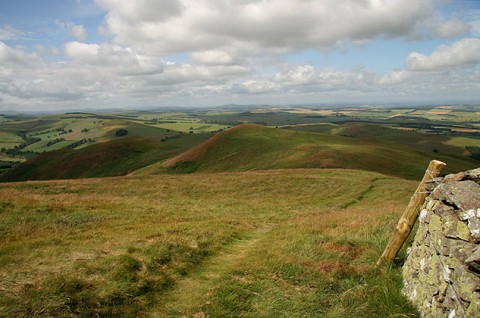Pilgrims together on St. Cuthbert's Way
Every step of my sister’s pilgrimage was a prayer, and I tried to follow in the path she made.

Chaucer wrote that spring inspires people to go on pilgrimages. But it was in the dead of winter that my sister and I began dreaming of unfolding our legs from beneath our desks and walking, as Thoreau once put it, “through woods and over the hills and fields, absolutely free from all worldly engagements.”
We knew absolute freedom wasn’t an option, but we thought the woods might be within reach. We searched the Internet until we found St. Cuthbert’s Way—a 100-kilometer walk through the Scottish borderlands that begins in the ruins of Melrose Abbey and ends on the Holy Island of Lindisfarne. The route would take us not only through woods, hills, and fields, but also across an old pilgrim route over the ocean sands at low tide. We would put our feet in the salty mud just as earlier pilgrims did.
St. Cuthbert was a seventh-century holy man whose life was documented in verse and in prose by the Venerable Bede. Bede described the energetic holy life that Cuthbert lived as a young man, his journey toward greater solitude at Lindisfarne, and his practice of standing in the North Sea to pray. According to Bede, when Cuthbert finished his prayers otters would follow him out of the water and warm his feet with their breath.





